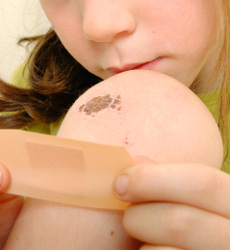
Basically, this gel works by suppressing a key gene, which happens to be one of the basic physical and functional units of heredity. This boosts the blood supply and alters the way new tissue is laid down.
It’s a known fact that when skin is damaged, a blood clot tends to form and the cells that lie underneath the wound start to repair the damage. This leads to scarring, which is basically a natural part of tissue repair. Scarring most often tends to happen where skin has healed after a cut or burn.
The first stage of healing generally involves an inflammatory response, stimulating white blood cells to migrate to the site of injury, and kill of potentially disease-causing microbes.
But, did you know that scarring is not limited to just the skin. All tissues scar as they repair. For instance, an alcohol-induced liver damage leads to fibrosis and liver failure, and after most abdominal surgeries, scars can often lead to major complications.
Thus, even though scarring is the most obvious on one’s skin, it can also occur in many other tissues in the body, posing serious consequences.
Now, these scientists have discovered that a single genes known as osteopontin plays a very important role in controlling the process. These very scientists have developed a gel that suppresses this action.
The scientists found that once the gel was applied, the speed of regeneration of blood vessels around the wound, and the rate of tissue reconstruction were greatly accelerated.
Besides, deposition of collagen layers tended to be more controlled. This resulted in less scarring.
